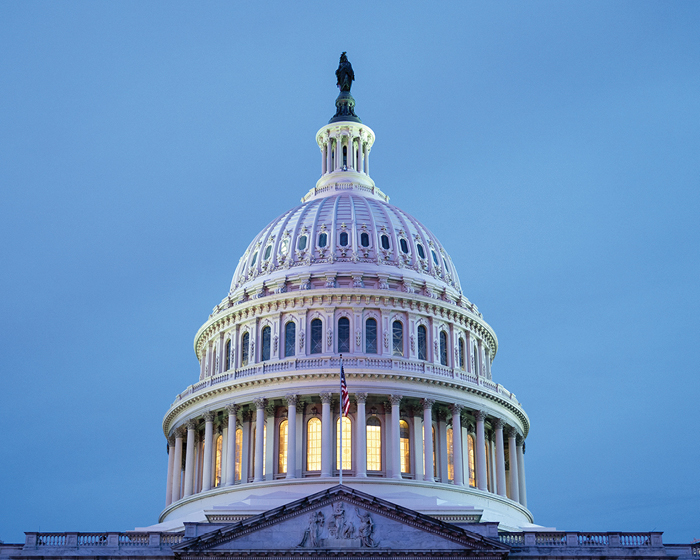Key Takeaways
- The federal government began a shutdown this week following a lapse in appropriations.
- Part of the partisan standoff involves enhanced credits for insurance on the Affordable Care Act exchanges.
- The IRS has not yet released plans should the shutdown stretch on.
- IRS working on transition guidance for first year of new tips, overtime deductions.
- Democrats look to expand OBBBA tax benefits despite opposition.
You can time the start of a government shutdown to the minute—in this case, to 12:01 a.m. Wednesday morning, when funding for federal agencies stopped under the continuing resolution Congress passed in March.
The effects, though, take longer to register.
Democrats and Republicans failed to find common ground during a brief Monday meeting at the White House, one of the few times they’ve come together to discuss the situation. The House of Representatives passed legislation last month to continue funding the government at current levels—a “clean” continuing resolution, in D.C. parlance—but the measure failed to pass the Senate, after only a few Democratic senators voted in favor.
Democrats insist they will not support a clean CR, and are hoping to use the impasse to push for policy changes. Chief among those is an extension for enhanced premium tax credits for the Affordable Care Act exchanges, which were first enacted in 2021 and extended in 2022. A few Republicans, including Senate Majority Leader John Thune, have said they’re open to discussing that issue–but not in a stop-gap funding measure, and not while the government isn’t open.
Shutdowns aren’t spelled out in federal law. Rather, they’re an interpretation of the Anti-Deficiency Act, a 19th-century law that forbids departments or agencies from spending money not appropriated by Congress. In 1980, the attorney general wrote an opinion stating that in the event of a funding lapse, government agencies could not continue operating without violating the law. Later opinions and agency practices dictate that some employees, often deemed “essential” for protecting life or property, could still come to work. Since then, shutdowns have become more and more common as partisanship in Congress has skyrocketed.
The Internal Revenue Service issued a plan last week stating that it could use unspent Inflation Reduction Act funds to continue normal operations for at least five days after the lapse begins. It hasn’t spelled out any further shutdown plans. During the shutdown that stretched from December 2018 to January 2019 the IRS furloughed most of its staff, but recalled about half for the start of filing season. This year, the agency is already entering the shutdown with a reduced workforce following cuts by the Trump administration and Republicans in Congress.
According to the Department of the Treasury’s shutdown plan, many offices, including the Office of Tax Policy, will continue to perform core functions with reduced staff. (Which could include coordinating with Congress about tax policies that might be part of an agreement to open the government, the plan notes.) If the shutdown stretches beyond five days, it may recall “policy experts to address issues related to domestic and international economic affairs,” the plan states.
Past experience has shown that shutdowns can be chaotic and unpredictable—in Congress and in federal agencies. That will likely be even more true this time around, with an administration that has not been hesitant to revisit past practices.
Recent Tax Pieces:
What's Behind the Health Care Fight That Led to the Government Shutdown – Selena Simmons-Duffin, NPR:
That is only about 7% of the U.S. population, but the people who rely on these plans are an influential group that includes small business owners, farmers and ranchers, says Cynthia Cox, vice president and director of the Program on the ACA at the nonpartisan health research organization KFF.
Some Democrats Want to Upsize Trump’s New Tax Cuts – Richard Rubin, The Wall Street Journal:
Democrats are seeking their tax-policy footing after Trump turned versions of his “no tax on—” campaign slogans into the “one big, beautiful bill” that is likely to deliver many Americans bigger refunds early next year.
“I disagree with all the policies, but he does tend to tap in to a feeling among voters,” said Rep. Angie Craig (D., Minn.). “Sometimes, the top-line feelings are real even if his solutions are going to make things worse.”
Employers Should Sit Tight for OBBBA Transition Guidance, IRS Says – Benjamin Valdez, Tax Notes ($):
“The written guidance on that is still being developed,” Ferrell said. “That’s the extent of what I’m able to share at this time.”
The EV Credit Is Dead. Long Live the EV Credit? – Marie Sapirie, Tax Notes ($):
GOP Moves Closer to Nixing IRS Direct File – Kim Dixon, Bloomberg Tax ($):
Sound familiar? That’s because the IRS already has such an option called Free File that was created two decades ago under President George W. Bush. Many big tax prep firms backed out of Free File in recent years, amid media reports that the firms hid their free options.
Make a habit of sustained success.



